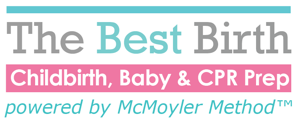Here is Part 3 regarding the film “The Business of Being Born.” I am including several viewpoints here: from a new dad who wrote an editorial to the SF Chronicle, from a highly respected pediatrician who called into KGO radio while the director and producer were being interviewed and from San Francisco OB/Gyn Dr. Laurie Green.
On Sunday, January 20th Damon Lisch, who lives with his wife and new son in Albany, CA wrote an insightful and eye opening piece to the SF Chronicle in response to the film “The Business of Being Born”:
- In it he said “Being conscientious educated liberals, and being more than a little nervous, we read all of the literature and made a birthing plan, stocked up on whale music and prepared for our spiritual journey.”
- “My wife’s water broke early…THREE DAYS LATER, my wife gave birth to a healthy boy. My wife was horribly uncomfortable for the first two days, but she bravely refused painkillers and despite the recommendation of the doctors, we refused the “assault on the territory of a woman’s body.” The hospital was totally responsive to our birth plan, despite misgivings. As a result, my wife went through far, far more pain and discomfort than she needed to.
- Our experience convinced me that the ‘alternative birth” movement has caused untold suffering, and I resent it.
Also in January of this year, Dr. Pete Contini, Pediatrician, called into KGO radio to try to respond to the inaccuracies he heard coming from both Abbey Epstein and Ricki Lake…they dismissed him pretty quickly, even though he approached them with respect and a genuine attempt to educate. Some of his points included:
- A 30 hour labor (which Ricki Lake’s was the first time around) warrants medical intervention
- The ensuing infection that developed during her long labor was not the result of vaginal examinations; rather this was the result of the prolonged length of labor and ruptured membranes
- That midwives take care of healthy/low risk women; Obstetrician’s provide care to the mainstream, including high risk OB patients, therefore the cesarean rate will of course be higher among OB’s compared to midwives; in other words, by the time of labor, high risk or complicated patients have already been selected out of the midwife pool, leaving a group of women more likely to have a vaginal delivery.
According to Dr. Laurie Green, it is difficult for patients to distinguish between informational materials offering personal opinions compared with evidence-based advice. Healthy women giving birth before age 23 often have textbook non-interventional births, but as in the case of athletes, age is a risk factor. Women giving birth for the first time after the age of 34 are more likely to have both pregnancy and birth complications, and medical interventions are more likely to be necessary…and lifesaving. All physicians want their patients to have the birth they desire, and to bring to bear years of experience to reach this shared goal. Ironically, physicians and the medical team are more open-minded and flexible than Ms. Lake, who has a narrow view of what a ‘successful’ birth should entail. So what is the right approach? Who do I trust, and what should I do the day I give birth?





Leave A Comment
You must be logged in to post a comment.